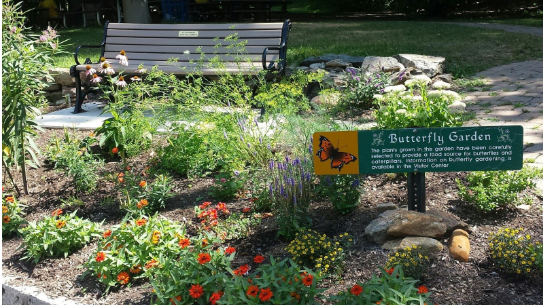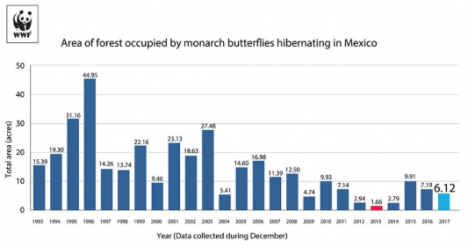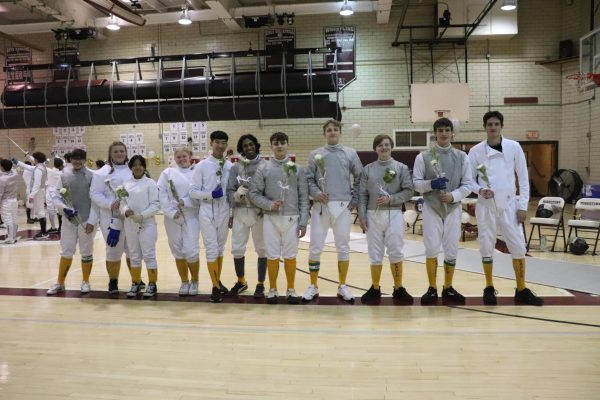Beautiful Butterfly Gardens

School Butterfly Garden
February 19, 2020
More schools should have butterfly gardens to help butterflies on a local level and to keep their majestic colors in our lives. The monarch butterfly population has dropped 90% in the last 20 years and the federal government still hasn’t listed them to be protected under the Endangered Species Act (NatureServe). Morris Knolls could help with this atrocity by considering starting a butterfly garden.
First and foremost, butterflies are going extinct due to humans disregarding the environment. The many negligent actions of humans are leading to the rise in temperature, dryer climate, droughts, and forest fires. People also overuse herbicides and are logging too much. These actions contribute to the loss of butterfly habitats and their decrease in population.
Planting a butterfly garden in schools is a great solution that will benefit the growth and education of all students. It promotes active learning, which allows students to be the center of their education instead of passively learning. This enables them to retain more information. Moreover, introducing gardens would reduce stress in schools. Disconnection from the world is detrimental to a student’s mental health. This is revealed by the drastically higher suicide rates of teens who use technology an abundant amount, which strips them of their connection to the rest of the world. The author of many award-winning television programs including his documentary on Climate Change, Sir David Attenborough, said that looking at butterflies can increase happiness (good living). Butterfly gardens would help pupils create connections to the environment, other species, and other students. Morris Knolls student, Grace Haag, stated, “Every day I would see the butterflies and feel happy because all of my problems would disappear due to the simply beautiful creatures.” Ultimately, butterfly gardens would improve student retention, preparation for the future, and mental health.
Schools must take action now. Scientists believe if trends continue, there is up to a 57% chance in 20 years the number of monarchs will drop to a point of no return (Natural Geographic). There is little federal support, so there needs to be local action. With the combined effort of students, faculty and the education provided, the gardens planted at schools would help butterflies.
MK Art teacher and advisor of the Ecology Club, Mrs.Stauss, stated: “a butterfly garden would benefit Morris Knolls in a magnanimous way.” She went on to say the different ways that classes from every subject could participate and learn from butterfly gardens. Furthermore, it would help increase communication between administration and students. Another valuable point she brought up is that the garden could “create a place where students earn volunteer hours and valuable experience. It would be neat to do it inside the middle of the Science Wing Atrium, where there is space and sunlight.” As illustrated by Mrs. Stauss, Morris Knolls can lessen the ever-pressing danger that butterflies face while involving everyone and improving the school as a whole, by creating a butterfly garden.
Imagine walking the halls of Morris Knolls and seeing the vibrant colors of a butterfly thanks to the garden that you helped grow.











